- Due to globalization, the business environment has become more competitive (Tiwari 675).
- For businesses to survive in the present environment, they must put more emphasis on their competitive strengths and ensure development of long-term strategies.
- New systems and practices must be adopted since the old ones are no longer appropriate (irrelevant).
- Development is achieved through people. Therefore, proper human resource management is vital for any organization striving to remain relevant.
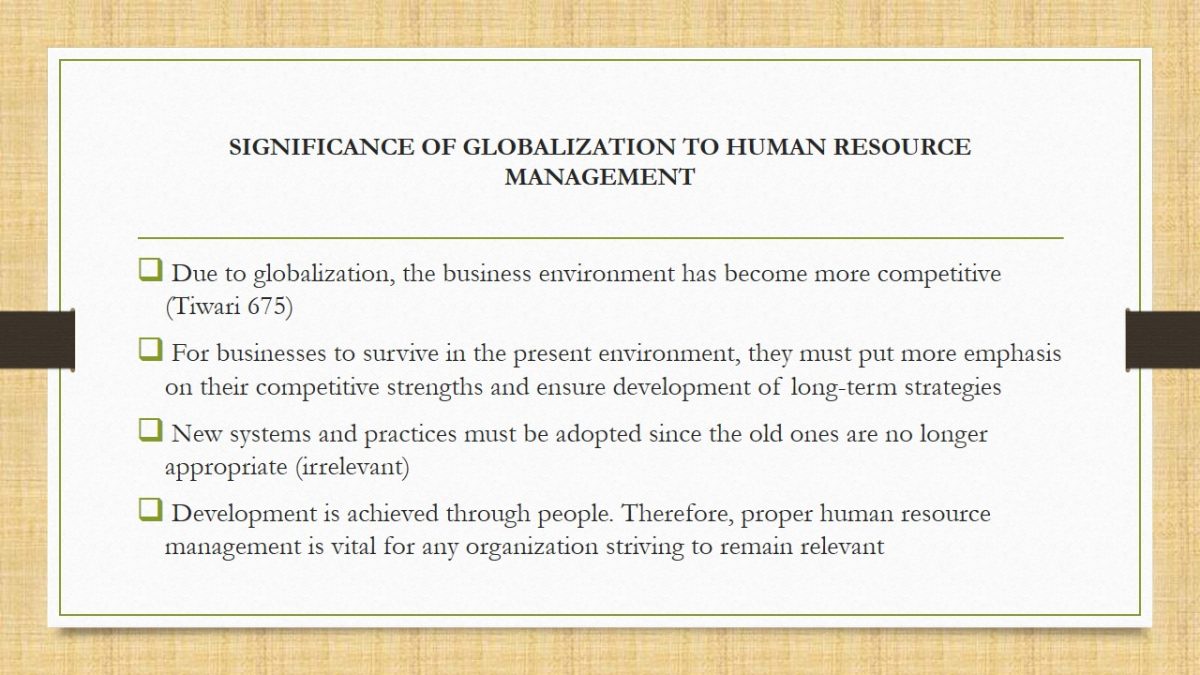
Approaches for Handling Globalization
Human Resource Planning (HRP)
- This is a critical management function that assists in providing information on resource flow.
- It is significant in determining the recruitment needs, development plans and succession.
- In this new age, human resource management should be involved in studying the past trends in employment loss.
- Human resource planning is important in minimizing redundancies and shortage of labor, among other issues.
Advantages
- Human resource planning ensures that the qualified individuals are recruited and retained.
- Ensures that the employees selected are flexible enough to adapt to change.
Disadvantages
- Strategies and techniques can be complicated.
- Costly and time consuming.
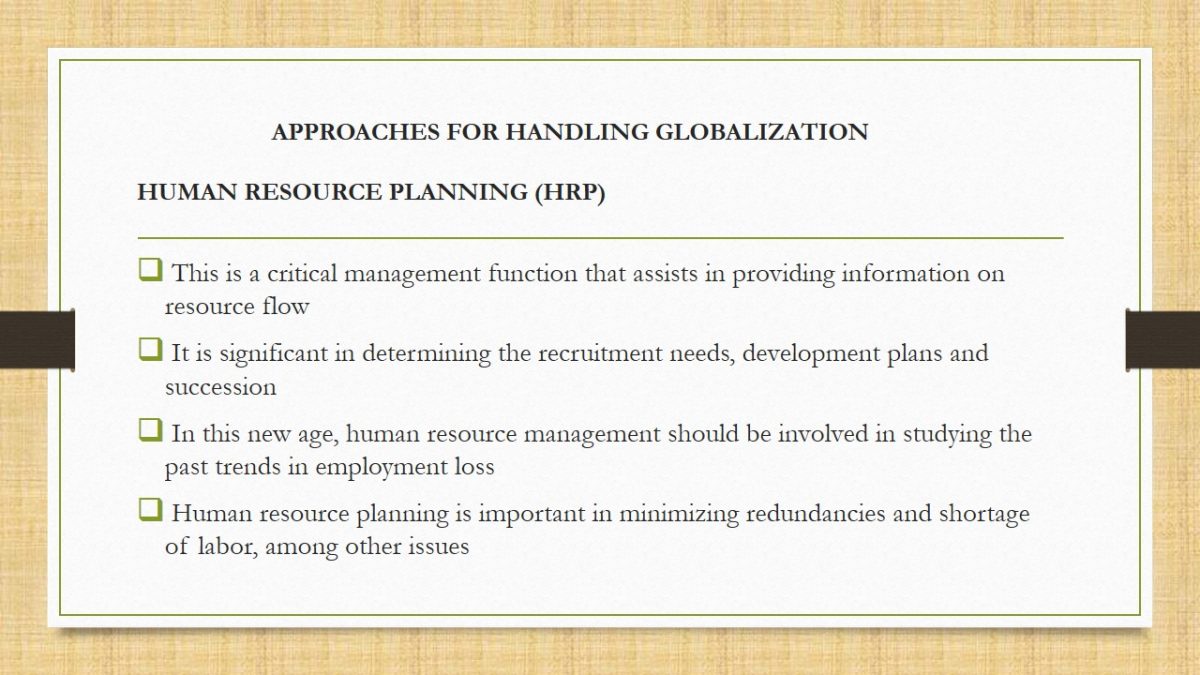
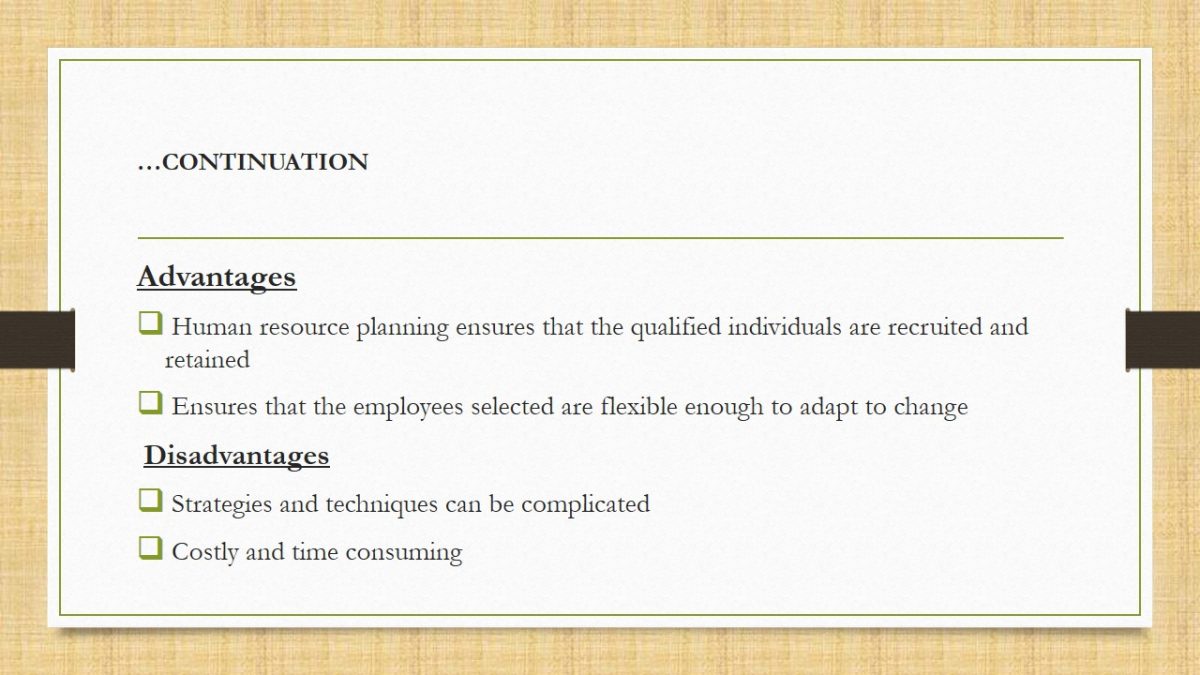
Recruitment and Retention
In this competitive business environment, the selection of the right person for the job is one of the most crucial decisions made by human resource personnel.
The recruitment process should not be based on ethnic or tribal lines (traditional approach) but purely on merit.
- Advantages:
- Reduce confusion and ensure more commitment.
- Saves time and money (hiring costs, future turnover).
- Avoiding inappropriate hires.
- Prolonged vacancies may reduce morale of the remaining staff.
- Disadvantages:
- Retaining redundant employees may make the organization less productive.
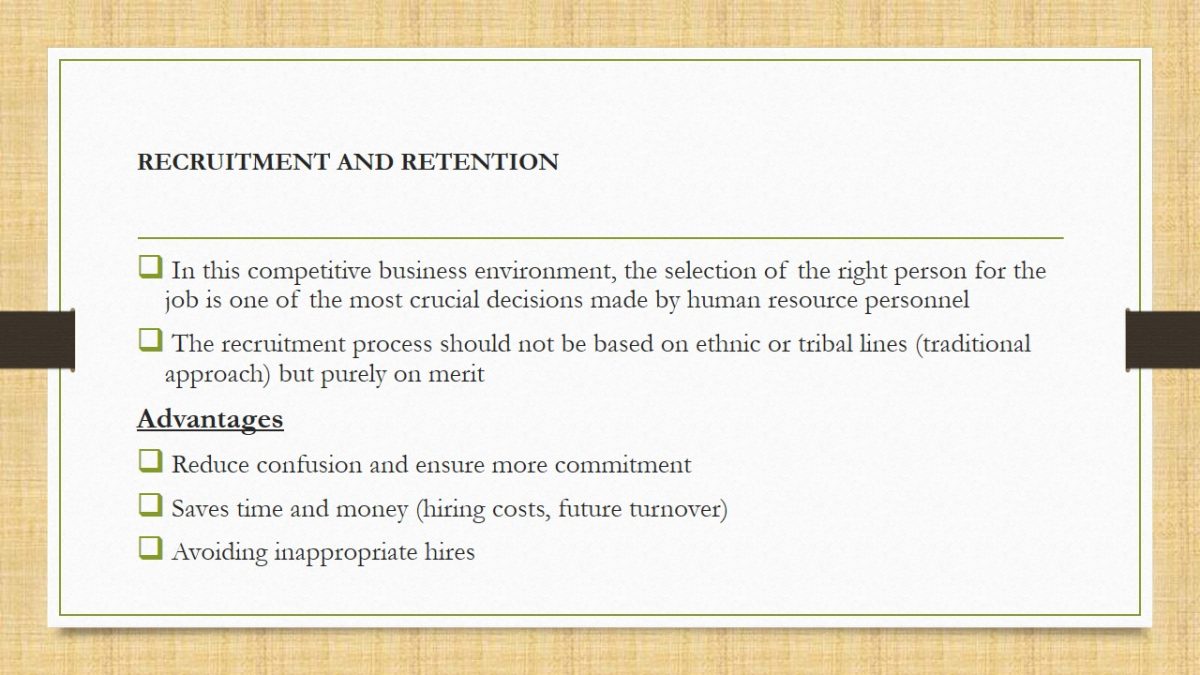
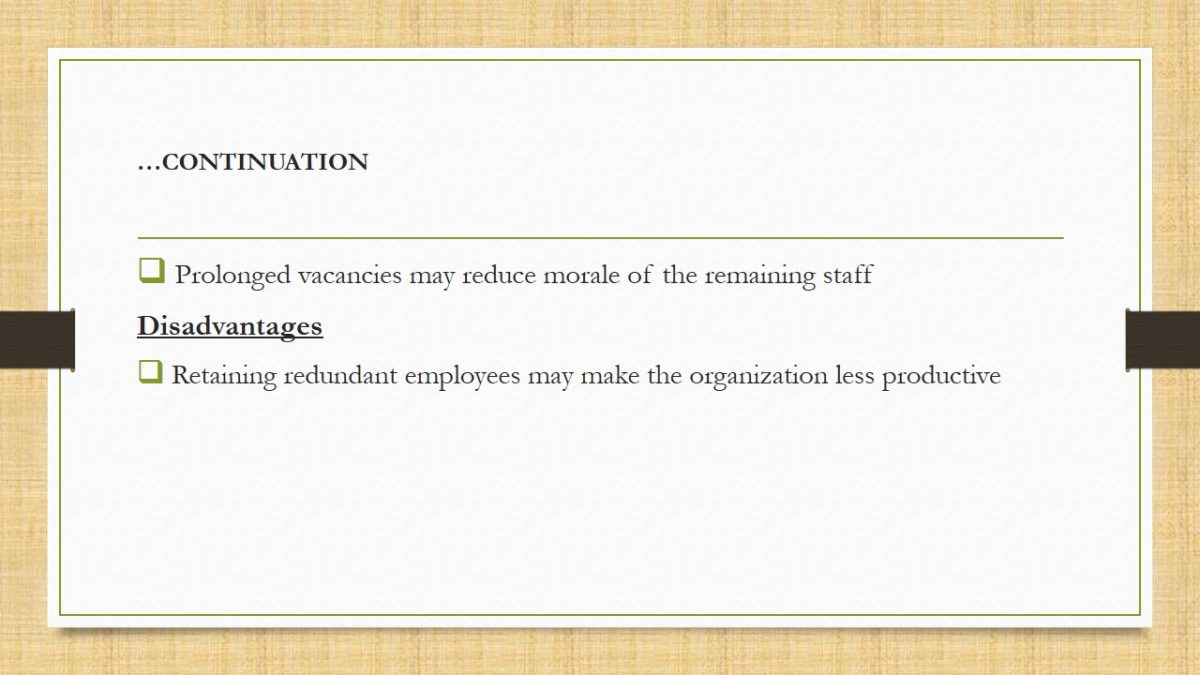
Training and Development
In order for organizations to achieve competitive advantage, they must ensure continuous training and development of their employees (Cesyniene 46).
- Advantages:
- Ensure that employees develop right skills.
- Ensure that employees develop proper attitudes in order for them to be more effective and efficient.
- Training helps to address weaknesses in the employees’ workplace skills.
- Ensures employee satisfaction.
- Ensure that individuals have a consistent experience and improved knowledge.
- Ensure improved employee performance.
- Disadvantages:
- Some employers find training and development expensive.
- Employers may miss out on work time when they are away training employees. This may lead to the delay of ongoing projects.
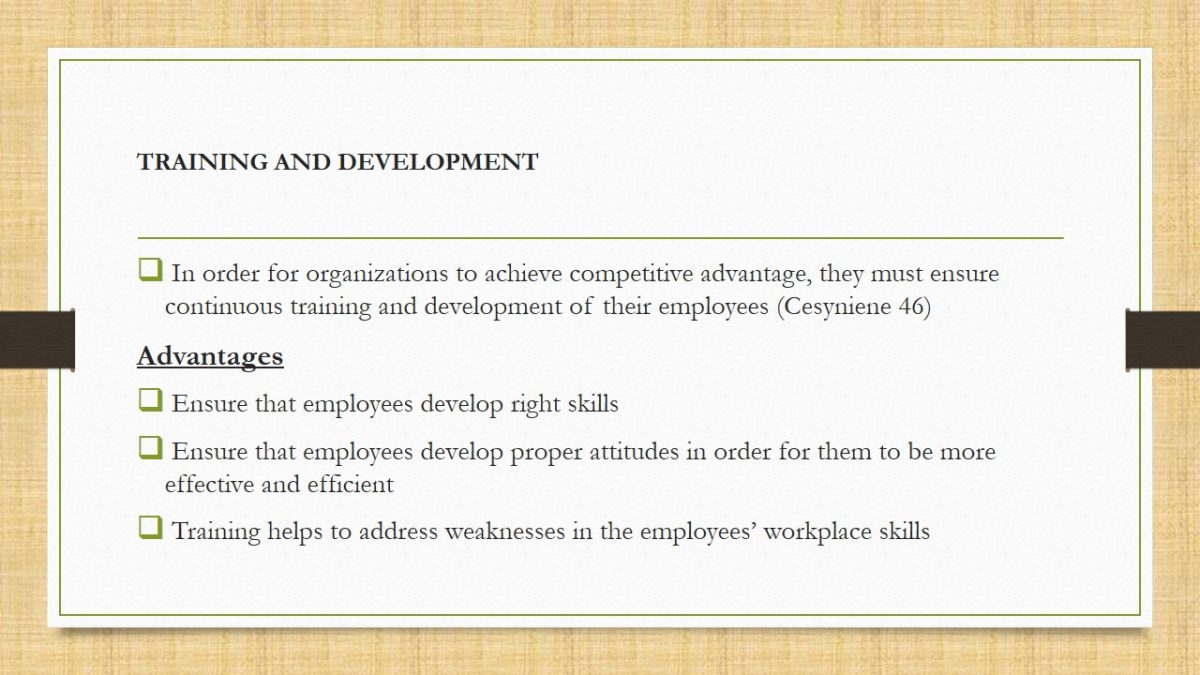
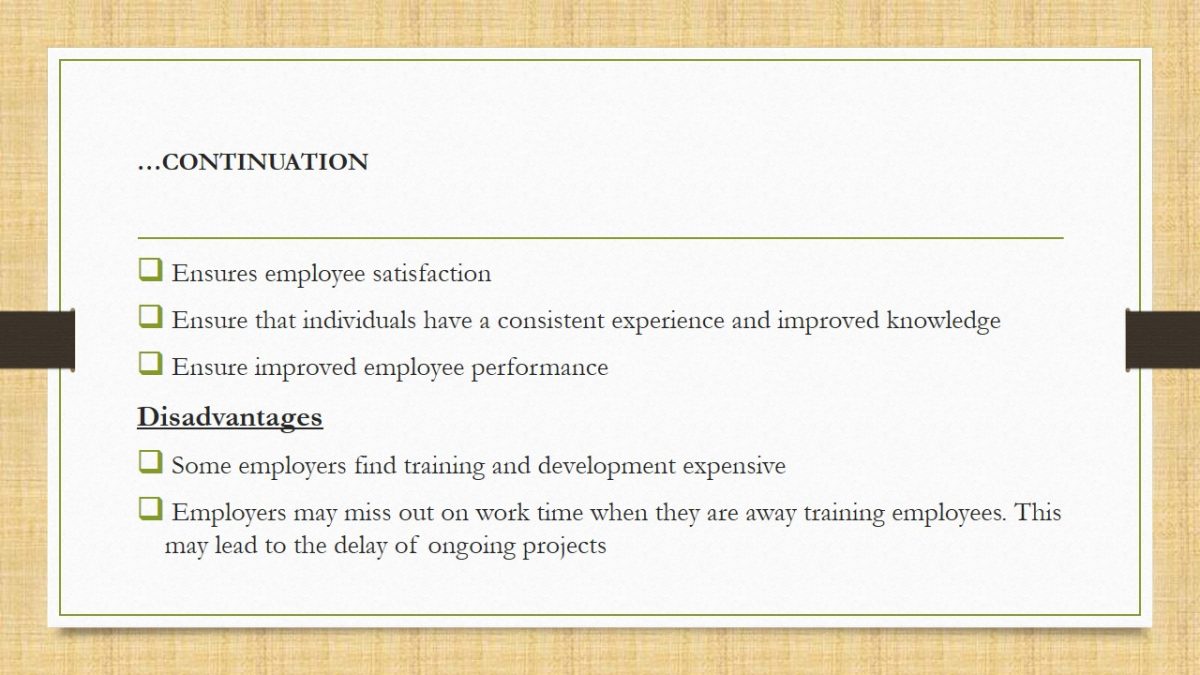
Reward Management
Provision of wages is one of the sources of motivation to employees. Therefore, HRM should ensure that the employees are rewarded well for their services.
Globalization has led to increased mobility of labor (Tiwari 675). Individuals go across borders where wages are greater.
- Advantages:
- Proper reward management increase employee morale and productivity.
- Disadvantages:
- Greater reward translates to greater costs for the organization.
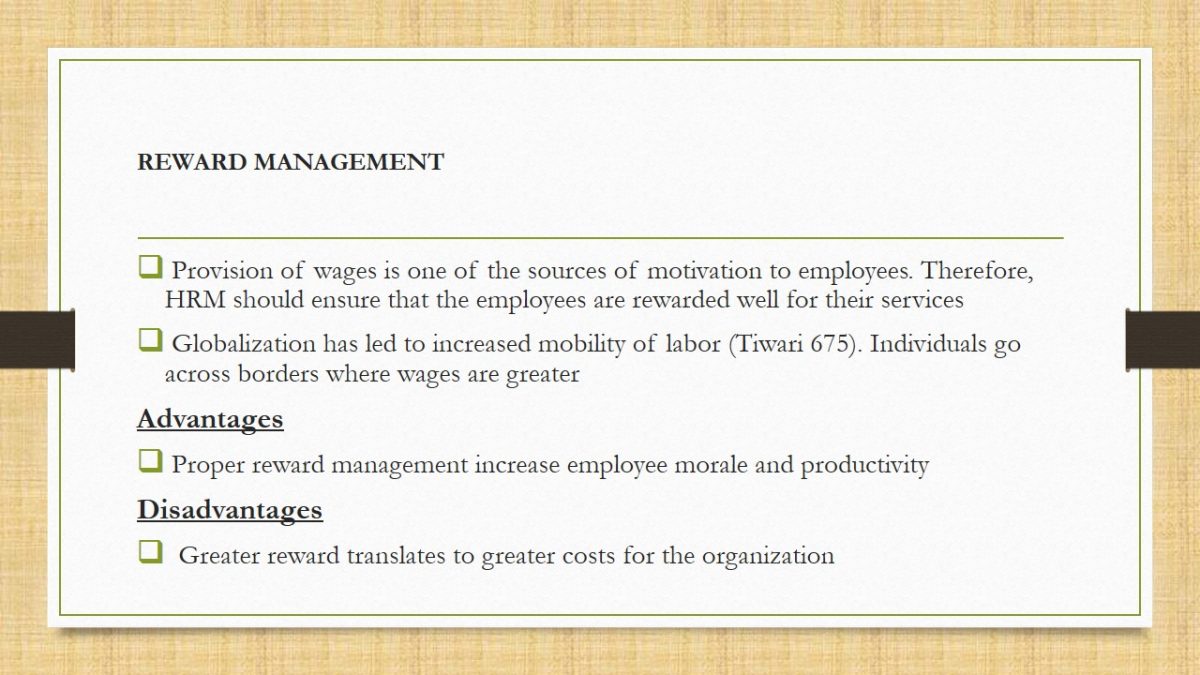
Recommended Approach to Adopt
- I would recommend that training and development be adopted and implemented in organizations in order to effectively curb the effects of globalization.
- Since globalization is characterized by growth in sophistication in the business world, organizations striving to survive the effects of globalization would require embracing change.
- Organizations can ensure that they go with the tide by ensuring that the employees and management personnel are properly trained.
- Training and development also ensures that the organization remains relevant. This may also be strengthened through the adoption of new technologies and systems.

How to Involve Key Stakeholders
The stakeholders that may be involved in ensuring training and development include the employees, other operating managers, the leadership team and other external bodies.
External institutions may be employed to ensure training of the employees and managers in the relevant fields. Such resources may also assist in the introduction of relevant technologies in the organizations.
The leadership team may be used to motivate the employees to embrace change by widening their scope of knowledge through training.
All the stakeholders should work together to ensure that the organization remains competitive despite the influences of globalization.
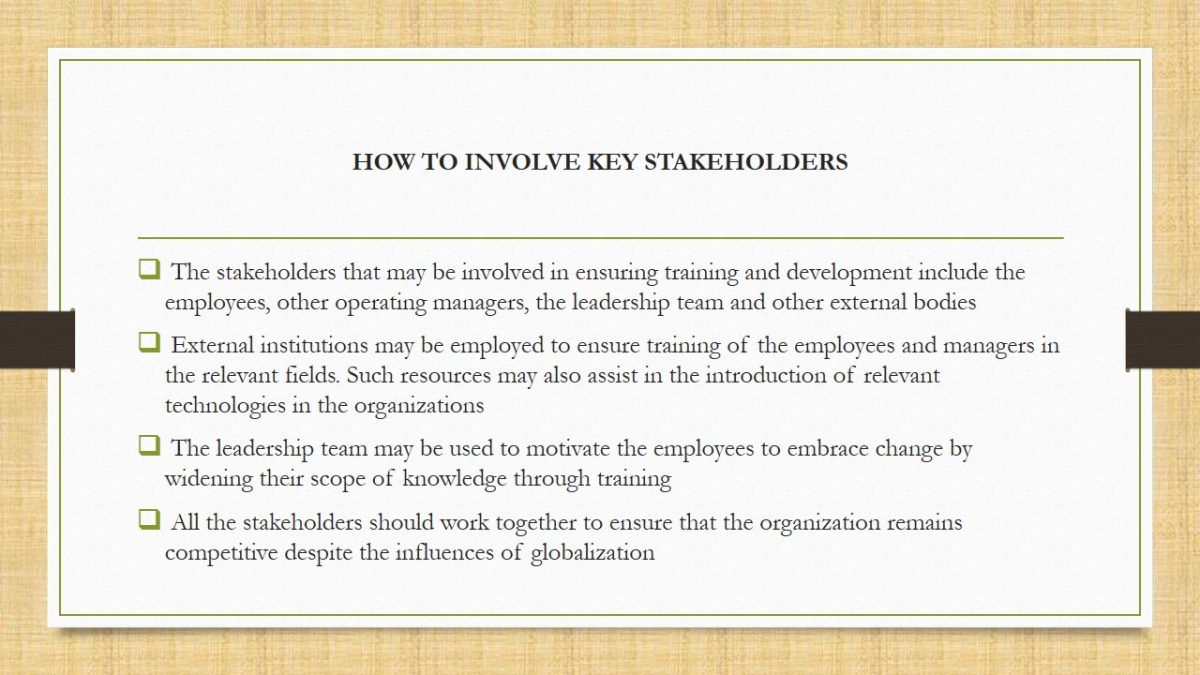
Works Cited
Cesyniene, Rima. “Globalization and human resource management.” Ekonomika 82.1 (2008): 41-56. Print.
Tiwari, Pankaj. “Human resource management practices: A comprehensive review.” Pakistan Business Review 1.1 (2012): 669-705. Print.